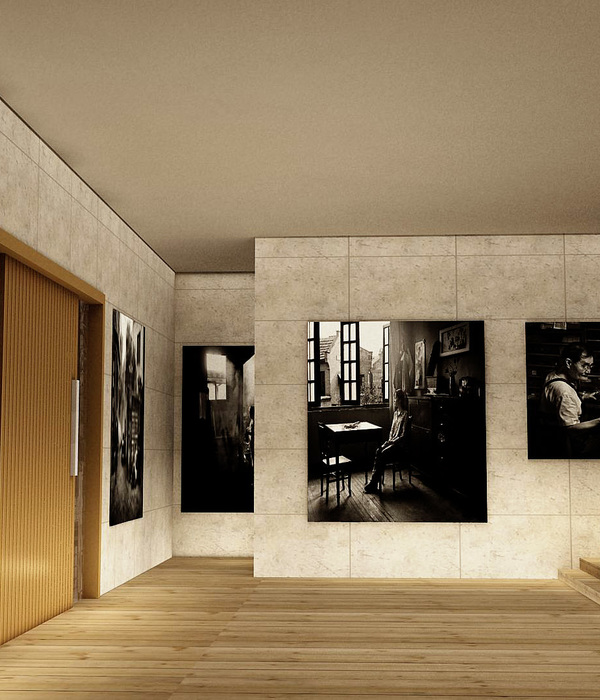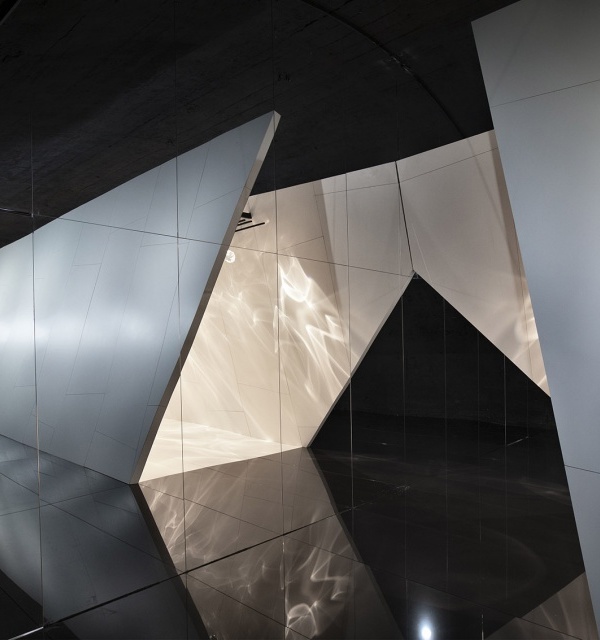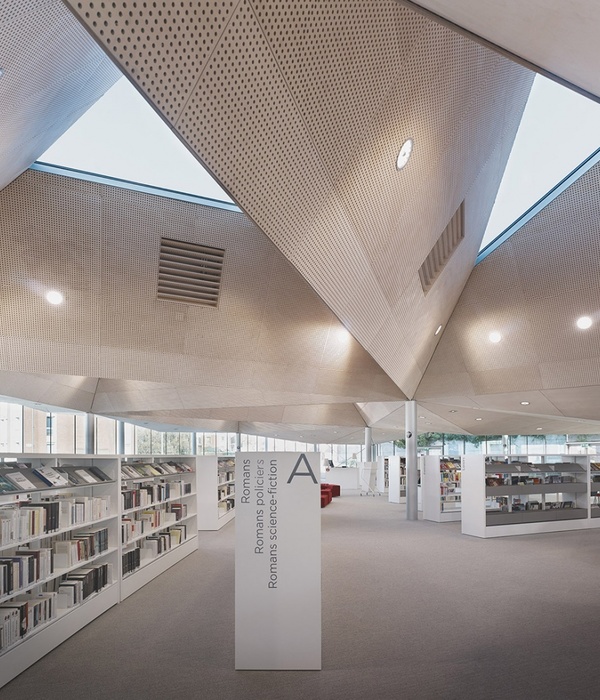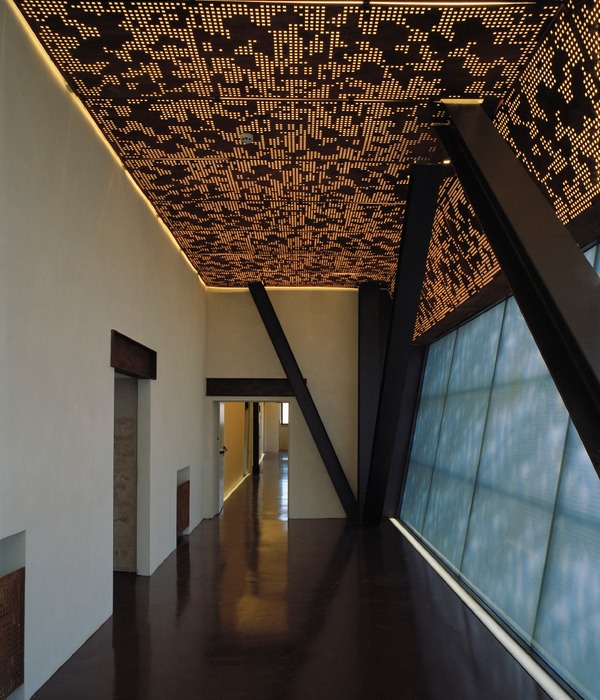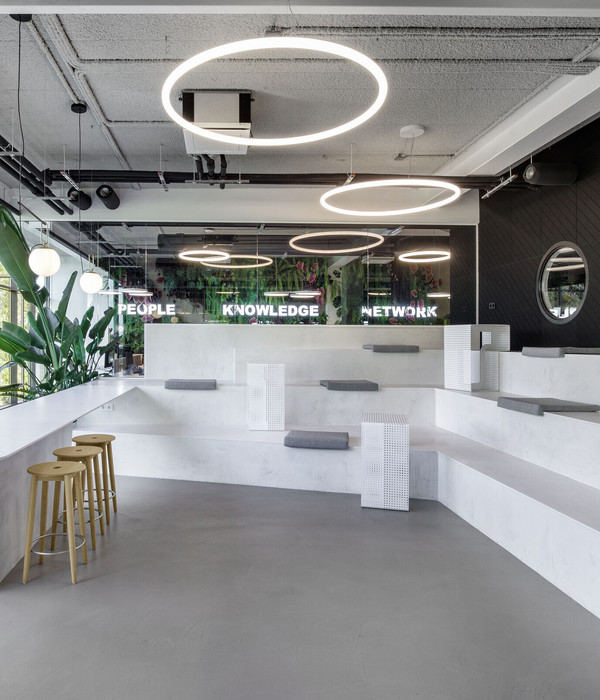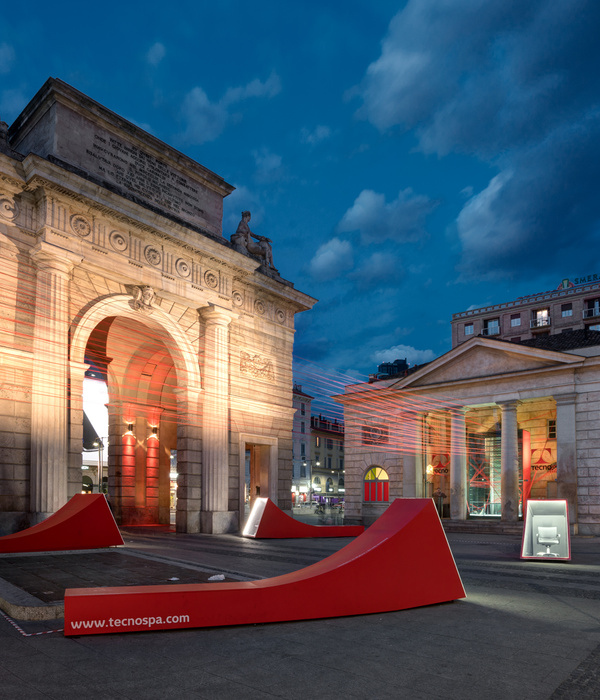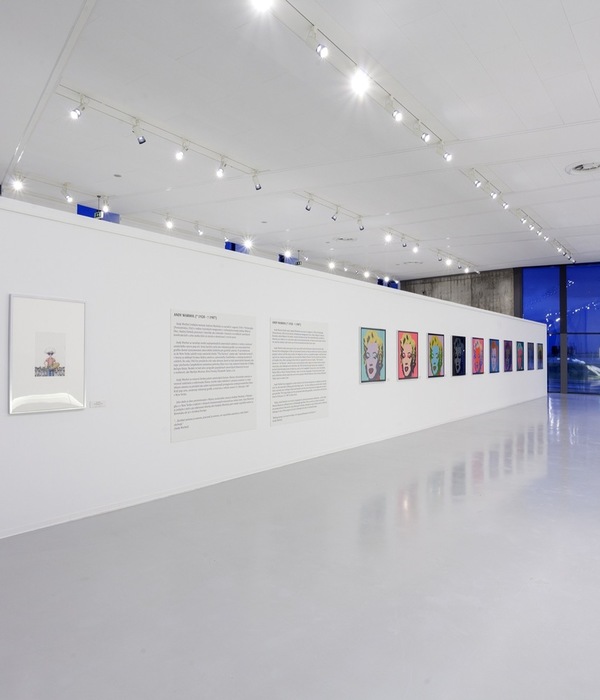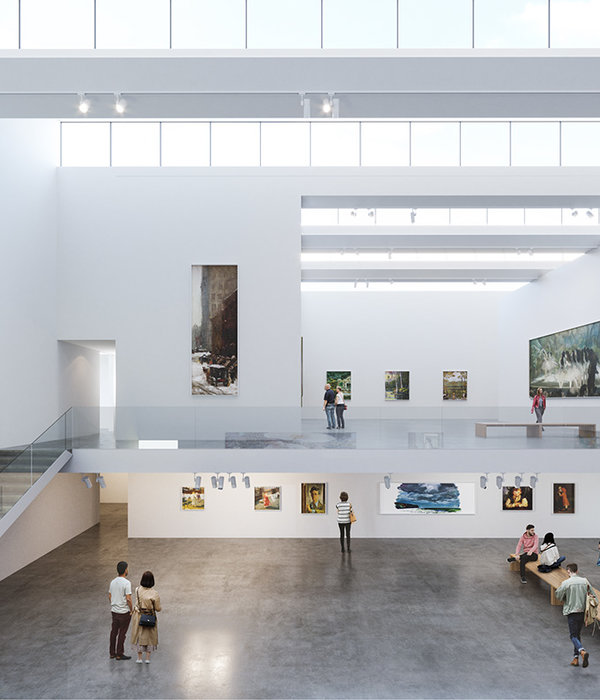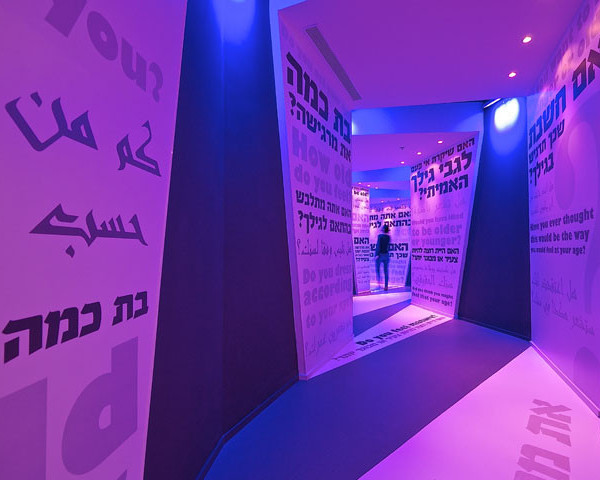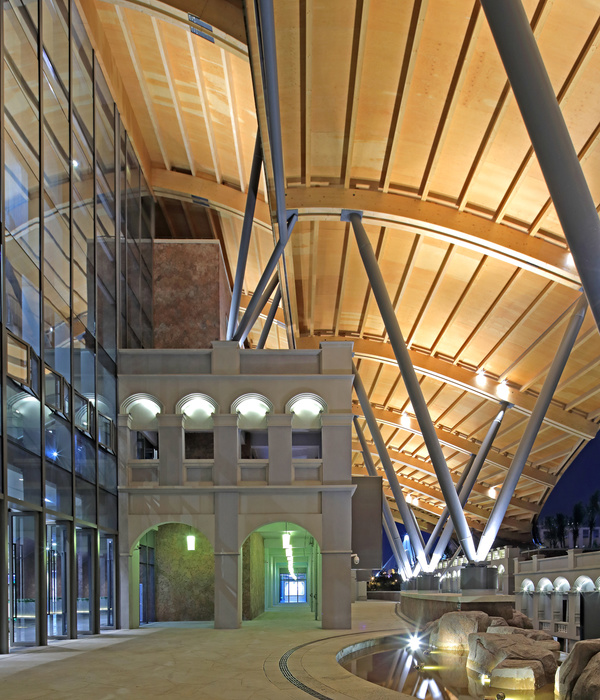- 项目名称:上海市工人文化宫茉莉花剧场改造项目
- 设计方:上海华建工程建设咨询有限公司
- 施工图设计:吕景芳,王胜,谢蓓华,林喜云,朱晓臻
- 项目地址:上海市黄埔区北海路251号
- 建筑面积:2254.52平方米
- 摄影版权:林旭阳,施益平,吕静芳,噔噔
- 品牌:涂料,金属,夹胶玻璃
茉莉花剧场前身为中央大戏院,位于北海路云南路口(北海路二百四十七号云南路口)。1923年2月16日,彼时名为申江大戏院的茉莉花剧场首次开张,专映电影、演出京剧;原址于1925年4月24日易名为中央大戏院,二十世纪三十至四十年代多演沪剧,成为上海重要的沪剧演出场所;新中国成立后称中央剧场,演出仍以沪剧为主;1966年改为北海剧场;1972年起划归市工人文化宫,称茉莉花剧场,以放映电影为主,兼演话剧和戏曲。
Jasmine Theater, formerly known as the Central Grand Theater, is located at the intersection of Yunnan Road, Beihai Road (Yunnan intersection, No. 247 Beihai Road). On February 16, 1923, it was named Shenjiang Grand Theater and opened for the first time especially for movies and Peking Opera; in the 1900s, it performed many Shanghai operas as an important opera performance venue in Shanghai; after the founding of PRC, it was called the Central Theater, dominated by Shanghai operas; in 1966, it was renamed Beihai Theater; in 1972, it was divided into the city Workers’ Cultural Palace, called Jasmine Theater, which mainly showed films, also played drama and traditional Chinese opera.
▼项目概览,overall of the project
通过对上海市地方志、市档案馆、上海市城建档案馆、上海市历史博物馆、黄浦区档案馆、图书馆、申报等一系列与茉莉花剧场相关的文献史料的搜寻,发现其原始资料十分匮乏,仅获得的几张照片均为中央大戏院时期的侧面主入口局部断面,且两张照片上竖向长窗的风貌亦有所不同。至于申江大戏院时期及北海剧场时期的立面,则不得而知。
There are scare literatures after searching a series of documents and historical materials related to Jasmine Theater from Shanghai Local Chronicles, Municipal Archives, Shanghai Urban Construction Archives, Shanghai History Museum, Huangpu District Archives, libraries and declarations. Only a few photos obtained are partial sections of the side main entrance of the Grand Theater, with different vertical Windows in the two photos. The facades of the Shenjiang Theater and the Beihai Theater were still unknown.
▼历史图像资料,historical pictures of the project
由民生药厂的海报可以看出,中央大戏院存在历史悠久。根据《各影院之沿革小史》对茉莉花剧场的各历史阶段所作的详细描述,发现其对室内的部分描述颇具有参考价值。通过对档案图纸的查阅调取,得知中央大戏院为当时苏生洋行(E.Suenson & Co.Ltd.)的设计作品,同一时期的作品以简洁的竖向窗为主。
The poster of Minsheng Pharmaceutical Factory implied the long history of Central Theater. According to the detailed description of the various historical stages of the Jasmine Theater in “A Brief History of the Evolution of Each Cinema”, it is found that some of the descriptions of the interior has great reference value. With the retrieval of archival drawings, it is known that the Central Grand Theater was designed by E.Suenson & Co.Ltd., and the works of the same period were mainly simple vertical windows.
▼北海路沿街立面,Beihai Road Facade
▼北海路主入口,Main Entrance of Beihai Road
现存的茉莉花剧场为一般历史建筑,在过去的几十年中经历了数番改造,期间剥除了很多原有的特色和细节,最后留下来的是一座糅杂了各种风格和功能的建筑。茉莉花剧场的修缮工作将遵循四个指导原则:
1. 尊重历史、恢复旧貌
2. 与周边历史建筑风貌相协调
3. 不突破建筑现状外轮廓、不高出建筑现状总高度。
4. 室内功能、以恢复为主,并满足新规范对既有建筑改造的要求。
The existing Jasmine Theater is classified as general historical building by suffering several transformations over the past decades, during which period many original features and details had been stripped away, leaving a building with a variety of styles and functions. The restoration of Jasmine Theatre follows four guiding principles:
1.Respecting history and restoring previous appearance
2.Coordinating with the surrounding historical buildings
3.Remain the outer contour of the current building without exceeding the total height
4.Restore the interior functions and meet the requirements of the new existing building renovation code.
▼外立面-北海路正门,Facade-Beihai Main Entrance
▼外立面-北海路,Facade-Beihai Road
对比仅存的中央大戏院时期历史照片,发现现状建筑外立面已经完全被破坏,亟待整体改造。主要包括以下问题:形体上,建筑主立面两侧装饰线脚不对称侧面山墙层次不同(一侧2踩,一侧3踩);室外沿街面电线杆凌乱、配电箱贴临建筑,空调机箱随意钉挂,各色招牌将外立面覆盖殆尽;室内二层观众席前方加盖楼板;一层完全改为餐厅,原有舞台区域改为厨房;原有两层结构遭到更改与破坏;设施老化,观演区域局促。通过现场踏勘,建筑外立面的历史材质为灰色水泥砂浆带黄砂骨料,表面略微有些毛糙,该面层已被现状粉刷层覆盖。
Comparing the only remaining historical photos of the Central Grand Theater period, it is found that the current building facade has been completely destroyed, which requires urgent overall renovation. It mainly includes the following problems: In terms of shape, the decorative moldings on both sides are asymmetrical with different layers of the side gables (2 steps on one side and 3 steps on the other side); messy outdoor utility poles along the streets, attached the distribution boxes to the building, hanging the air conditioning boxes randomly, and covering the facade completely covered by various signboards; accompanying the extra floor slab in front of the second-floor indoor auditorium; the first floor was completely converted into a dining room, changing the original stage area into a kitchen; the original two-layer structure was destroyed; leaving the aging facilities and cramped viewing area. After having site survey, the historical material of the building facade was grey cement mortar with yellow sand aggregate, rough surface has been covered by current paint layer.
▼现状照片,Past Situation Photo
立面改造中由于缺少历史图纸,只能收集历史照片,利用透视法来还原历史立面片段的比例,根据人的高度1.7m来得出各窗户高度。北立面通过仅存的部分照片进行还原,东立面根据档案的平面图纸来对位门窗位置,参照苏生洋行同一时期的设计手法及现有右侧历史照片窗洞样式来还原此部分立面。屋顶经过多轮的改造,与历史严重不符,通过恢复二折女儿墙来还原历史风貌,同时保留现有设备功能。通过原始建筑图纸与现状测绘图对比,对具有历史保留价值且已保留至今的建筑元素,如木质与铁艺楼梯扶手,外墙青砖,地面水磨石等,按既定方案将这些重点保护对象取下并妥善保存,并在改造修缮完成后再运回现场重新利用。
During the facade renovation, due to the lack of historical drawings, we can only use perspective to restore the proportions of historical facade fragments, then calculate the height of each window based on several historical photos and 1.7m human height. The north facade is restored through the only remaining part of the photos. It aligned the position of the east facade openings according to the plan drawings of historical archives. Both corresponding production design method of E.Suenson & Co.Ltd. and existing related photos are used for the opening style restoration reference. The original roof had been reconstructed several times, which was seriously inconsistent with the history. In this case, we choose to restore the historical style by reinstating two-fold parapet, while retaining the functions of the existing equipment. By comparing the original architectural drawings with the current survey drawings, for the architectural remains with historical preservation value, i.e. timber and iron stair railings, blue bricks façade and terrazzo floor, these key protection objects were removed, stored and reused after the completion.
▼主立面,Main Facade
▼云南中路沿街立面,Yunnanzhong Road Facade
由于不可控制的历史原因,剧场平面功能经多次改造已被严重破坏,建筑平面改造力争恢复1923年时申江大戏院的功能布局。改造后各层功能分布如下:
剧院一层功能:主要由剧场前厅、剧场池座、舞台、卫生间、演员通道及相关设备用房组成;
剧院二层功能:主要为剧场楼座,结合贵宾室、休息区、演员化妆室、更衣室、卫生间及相关设备用房;
剧院三层功能:主要为排练室、互动展示区,结合办公室、储藏室、马道等相关设备用房、卫生间等;
剧院屋顶层功能:主要为屋面预留,结合设备用房和屋面设备平台等。
剧场恢复设计为拥有600余个座位,以话剧为主要表演内容,装修简洁大方,功能完备,方便广大群众享用公共文化服务的多功能剧场。
▼原始图纸,historical plan
On account of uncontrollable historical reasons, the theater plane function has been severely damaged after many renovations. The plane renovation strived to restore the functional layout of Shenjiang Grand Theater in 1923. After the transformation, the functions of each floor are distributed as follows:
The first floor is mainly composed of front hall, stalls, stage, bathrooms, actors’ passage and related equipment rooms.
Second floor is mainly composed of pits, combined with VIP room, rest area, actors’ dressing rooms, fitting rooms, bathrooms and related equipment rooms.
Third floor is mainly composed of rehearsal rooms, interactive display area, combined with offices, storage rooms, horse trails, related equipment rooms, bathrooms and etc.
Theater roof is mainly reserved for the roof equipment rooms and equipment platform.
The restoration design is a multifunctional theater with more than 600 seats for drama performance. The simple and elegant decor with complete functions can bring enjoyable and convenient public cultural service to the public.
▼剧场,Theatre
▼池座,Theatre Stalls
▼楼座,Theatre Pits
▼舞台,Stage
室内改造中本项目秉持修旧如旧的原则,采用海派设计风格,运用现代的设计手法重新演绎,一层的入口及大堂地面采用水磨石,墙面会采用彩色玻璃与海派风格的图案做搭配,配有相同风格的总接待台、VIP室。剧场装饰手法的设计灵感来自于水波纹,把水波演绎为一层一层的弧线造型运用在吊顶与墙面上,该造型与茉莉花剧场空间完美契合,吊顶搭配弧形的发光吊片,更显晶莹剔透,似水一样的波光粼粼。墙面采用吸音板与茉莉花造型的瓷片搭配,既有很好的声学效果又有精美的装饰效果。台口运用装饰主义风格的图案配以彩色玻璃与大堂呼应,地面采用哑光细条地板,将整个剧场氛围打造成海纳百川的老上海风格,焕发出勃勃向上的文化精神面貌。
In the interior renovation, this project adheres to the principle of restoring the previous appearance by adopting Shanghai-style and reinterpreting it with modern design techniques. On the first floor, terrazzo stone is used for the entrance and lobby ground, and stained glass for the wall to matched with Shanghai-style patterns. The main reception and VIP rooms are also equipped with the same style. The design of the theater decoration is inspired by water ripples. The layer-by-layer watering arcs can be applied to the ceiling and walls for fitting perfectly with the space of the Jasmine Theater. The suspended ceiling is matched with arc-shaped luminous hanging pieces with crystal and sparkling glow. The wall is matched with sound-absorbing panels and jasmine-shaped tiles, which has both exquisite acoustic and decorative effects. The entrance uses Art Deco patterns and stained glass to echo the lobby style. The floor uses matte fine strip timber to create inclusive old Shanghai style, thus revealing a vigorous upward cultural and spiritual outlook.
▼室内门厅,Internal Entrance Hall
▼窗洞细节,Openings Detail
随着改造修缮的完成,上海市工人文化宫茉莉花剧场将转型升级,带着历史的记忆与风貌,绽放在上海城市的中心,更好地承担起城市宣传和社会公益教育的职责和使命。在《上海市城市总体规划(2017-2035)》中,“卓越的全球城市”作为上海城市目标定位,在其指引下,上海将迈入向“卓越全球城市”进发的新篇章,在上海城市建设日益注重“城市更新”的今天,茉莉花剧场的重生,给其他历史建筑的改造利用提供了一个参考思路。作为上海城市建设与发展的见证者,在申城的城市更新中,愿为城市风貌的保持与城市记忆的延续贡献自己的力量。“好一朵美丽的茉莉花”即将盛开绽放。
With the completion of the renovation, the Jasmine Theater of the Shanghai Workers’ Cultural Palace will be transformed and upgraded in the center of Shanghai with historical memory and style, thus better undertaking the responsibilities and missions of urban publicity and social welfare education. In the “Shanghai Urban Master Plan (2017-2035)”, “Excellent Global City” is set as the target positioning of Shanghai city. Under its guidance, Shanghai will enter a new chapter by focusing on “Urban Renewal”. The rebirth of the Jasmine Theater will provide a reference for the transformation and utilization of other historical buildings. As a witness of the urban construction and development of Shanghai, Jasmine Theatre will contribute the strength to the maintenance of the style and memory continuation in Shanghai urban renewal. “What a beautiful Jasmine” is about to bloom.
▼一层平面图,First Floor Floor Plan
▼二层平面图,Second Floor Floor Plan
▼三层平面图,Third Floor Floor Plan
▼立面图,Elevations
▼剖面图,Section
项目名称:上海市工人文化宫茉莉花剧场改造项目
设计方:上海华建工程建设咨询有限公司
项目设计 & 完成年份:2022年
主创及设计团队
方案设计:施益平、程光、王伟
施工图设计:吕景芳 王胜 谢蓓华 林喜云 朱晓臻
室内:张胜楠
项目地址:上海市黄埔区北海路251号
建筑面积:2254.52平方米
摄影版权:林旭阳 施益平 吕静芳 噔噔
合作方
客户:上海市总工会
品牌:涂料、金属、夹胶玻璃
Project name: The Renovation Project of Shanghai Workers’ Cultural Palace Jasmine Theater
Design: Arcplus Group PLC Shanghai Arcplus Architecture Engineering & Consulting Co.,Ltd/Schematic Design Department
Design year & Completion Year: 2022
Leader designer & Team
Architectural Designed by Yiping Shi, Guang Cheng, Wei Wang
Construction Design by Jingfang Lv, Sheng Wang, Peihua Xie, Xiyun Lin, Xiaozhen Zhu
Interior Design by Shengnan Zhang
Project location: No. 251, Beihai Road, Huangpu District, Shanghai
Gross Built Area: 2254.52 square meter
Photo credits: Xuyang Lin ; Yiping Shi ;Jingfang Lv ;Degndeng
Clients: Shanghai Federation of Trade Unions
Brands / Products used in the project: Paint, metal, laminated glass
{{item.text_origin}}



